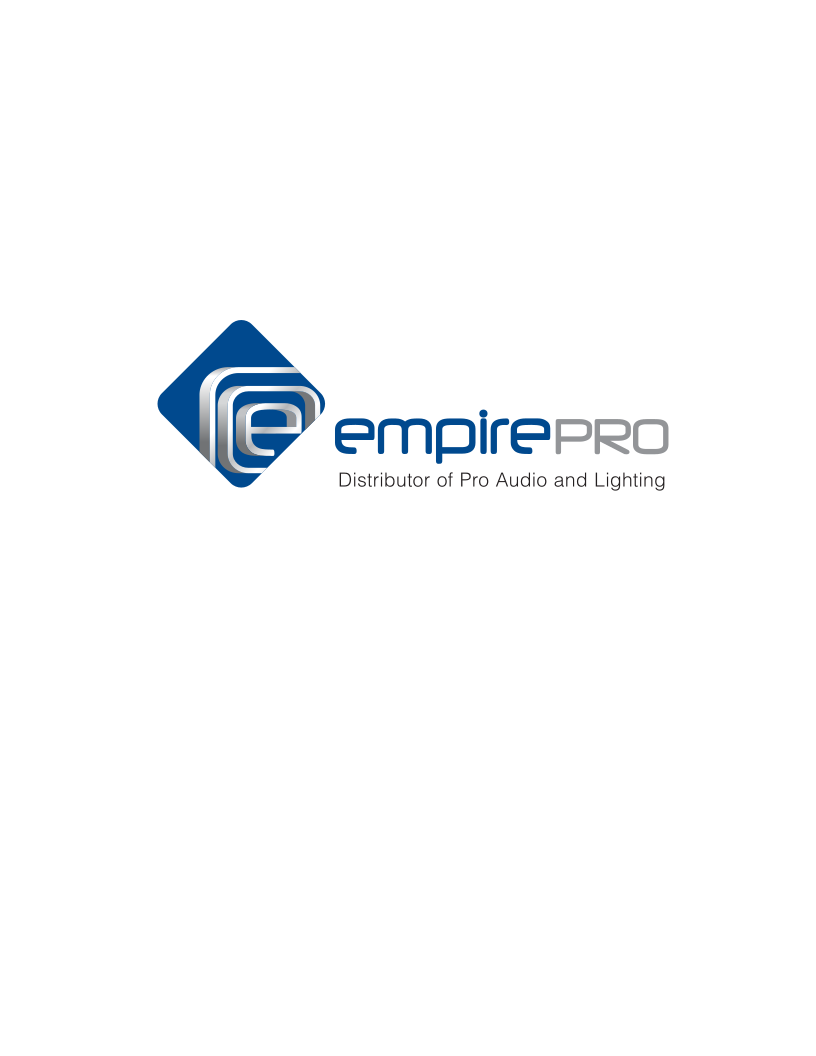Overview
The VLFC very low‑frequency control element is a self‑powered loudspeaker defined by its sonic linearity and unique ability to reproduce extremely low‑frequency signals at high continuous levels with very low distortion. This very low frequency response, coupled with exceptional headroom and optimized rigging options, makes the VLFC an incredible tool for applications requiring very low frequencies to enhance the audience experience.
The VLFC is ideal for any application that would benefit from the impact of sub‑sonic feeling—from large‑scale tours to special effects in cinema to theme parks.
An optimally tuned, vented cabinet houses the VLFC’s two 18 in long‑excursion low‑resonance cone drivers. A two‑channel Class AB/H bridged amplifier with complementary MOSFET output stages supplies ample continuous and peak power to the drivers.
The VLFC’s 13 Hz to 30 Hz operating frequency response complements Meyer Sound’s 1100‑LFC and other subwoofers in the lowest octaves even below the typical 20 Hz limit.
Meyer Sound’s design includes protective plastic skids on the bottom of the VLFC cabinet that securely align with the cabinet’s top slots. Stack units normally or reversed for cardioid configurations.
Using the same footprint of the 1100‑LFC, the VLFC integrates seamlessly with existing infrastructure. The optional MRK‑1100 rigging kit, available as a factory‑installed option or a field upgrade, includes captive GuideALinks™ that allow the loudspeaker to be flown from the MTG‑1100 top grid. Convenient pinned handles and slots make the GuideALinks, located at the front and rear of the cabinet, easy to set.
The GuideALinks also accommodate reversed units for flown cardioid arrays. The MTG‑1100 top grid supports suspension of line arrays comprising up to 16 cabinets at a 5:1 safety factor. For touring and portable systems, the optional MCF‑1100 caster frame supports secure travel with the VLFC in stacks of up to three units.
The RMS™ remote monitoring system provides comprehensive, real‑time information about loudspeaker parameters from a Mac® or Windows®‑based computer running Compass® control software via the RMS™ interface.
Meyer Sound constructs the VLFC cabinet out of premium multi‑ply birch and coats it with a slightly textured black finish. A powder‑coated, hex‑stamped steel grille with acoustical black mesh protects the unit’s drivers. Other options include weather protection and custom color finishes for fixed installations and applications with specific cosmetic requirements.
Features and Benefits
- meyer-blue-rule-line.png
- Sub‑sonic frequency response and linearity bring new possibilities for enhanced impact system design
- Easily integrates with 1100‑LFCs
- High peak power output yields excellent transient reproduction of very low frequencies and extreme operating levels
- Stackable and flyable with other VLFCs and 1100‑LFCs in regular and cardioid arrays
Applications
- meyer-blue-rule-line.png
- Stadiums and arenas
- Cinema and post‑production
- Theme parks
- Research
Specifications
| ACOUSTICAL1 | |
| Operating Frequency Range2 | 13–35 Hz |
| Frequency Response3 | 13–30 Hz ±4 dB |
| Phase Response | 13–30 Hz ±30° |
| Linear Peak SPL4 | 125.5 dB with crest factor >10.5 dB (M-noise), 125.5 dB (Pink noise) |
| COVERAGE | |
| 360° (single unit); varies with number of units and configuration | |
| TRANSDUCERS | |
| Low Frequency | Two 18‑inch long‑excursion low‑resonance cone drivers; 8 Ω nominal impedance |
| AUDIO INPUT | |
| Type | Differential, electronically balanced |
| Maximum Common Mode Range | ±15 V DC, clamped to earth for voltage transient protection |
| Connectors | XLR 5‑pin female input with male loop output; XLR 3‑pin female connectors available to accommodate only balanced audio (no RMS signals) |
| Input Impedance | 10 kΩ differential between pins 2 and 3 |
| Wiring5 | Pin 1: Chassis/earth through 220 kΩ, 1000 pF, 15 V clamp network to provide virtual ground lift at audio frequencies Pin 2: Signal + Pin 3: Signal ‑ Pin 4: RMS Pin 5: RMS Case: Earth ground and chassis |
| Nominal Input Sensitivity | 0 dBV (1.0 V rms) continuous is typically the onset of limiting for noise and music |
| Input Level | Audio source must be capable of producing +20 dBV (10 V rms) into 600 Ω to produce the maximum peak SPL over the operating bandwidth of the loudspeaker |
| AMPLIFIER | |
| Type | 2‑channel complementary MOSFET output stages (Class AB/H bridged) |
| Total Output Power6 | 5600 W peak |
| THD, IM, TIM | < 0.02% |
| Cooling | Three ultra high‑speed primary fans; three ultra high‑speed reserve fans |
| AC POWER | |
| Connectors | powerCON 32 input |
| Automatic Voltage Selection | 208–235 V AC, 50/60 Hz |
| Safety Rated Voltage Range | 208–235 V AC, 50/60 Hz |
| Turn‑on and Turn‑off Points | 165 V AC turn‑on; 264 V AC turn‑off |
| CURRENT DRAW | |
| Idle Current | 0.6 A rms (230 V AC) |
| Maximum Long‑Term Continuous Current (>10 sec) | 10.5 A rms (230 V AC) |
| Burst Current (<1 sec)7 | 18 A rms (230 V AC) |
| Maximum Instantaneous Peak Current | 53 A peak (230 V AC) |
| Inrush Current | < 30 A peak |
| RMS NETWORK | |
| Equipped with 2‑conductor, twisted‑pair network, reporting all amplifier operating parameters to host computer | |
| PHYSICAL | |
| Dimensions without Rigging | W: 54.65 in (1388 mm) x H: 20.48 in (520 mm) x D: 33 in (838 mm) |
| Dimensions with Rigging | W: 54.65 in (1388 mm) x H: 20.48 in (520 mm) x D: 33 in (838 mm) |
| Weight without Rigging | 298 lb (135.2 kg) |
| Weight with Rigging | 332 lb (150.7 kg) |
| Enclosure | Premium multi‑ply birch with slightly textured black finish; |
| Protective Grille | Powder‑coated, hex‑stamped steel with acoustical black mesh |
| Rigging | Optional MRK‑1100 rigging kit with captive GuideALinks secured with 0.5 in x 1.25 in quick release pins. Rigging supports ground‑stacked, flown, and cardioid configurations |






